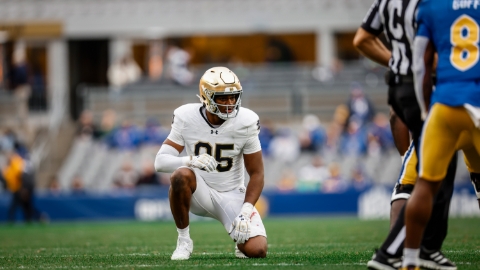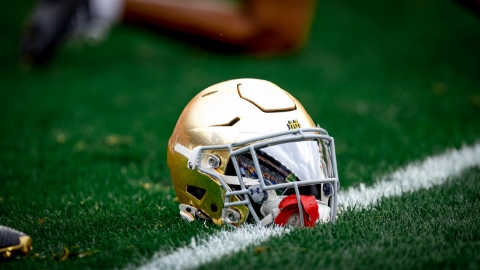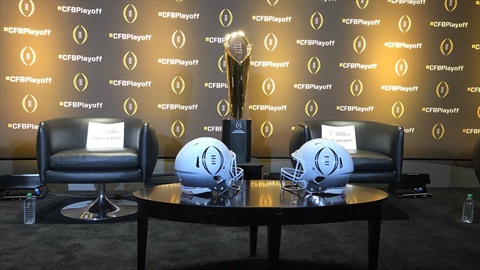
It may not be visible beneath their helmets, but there’s a collection of Notre Dame players sniffing anytime the Fighting Irish’s offense reaches the opposition’s 20-yard line.
For there is football’s proverbial red zone --- an area where team benchmarks are set and seasons oft are defined by an offense’s ability to score --- particularly touchdowns --- and a defense’s ability to deny.
“You can sniff the goal line. It’s there,” said tight end Cole Kmet, who’s scored touchdowns in two of his three games back since returning from a broken collarbone. “You’re almost to the finish line right there and you know the defense is tired and you’re kind of feeding off that and just getting ready to punch the ball in for a touchdown.”
Through five games, Notre Dame’s offense is sitting on red zone perfection. Twenty trips, 20 scores. Thrice, the No. 9 Irish (4-1) have settled for triples off the right foot of Jonathon Doerer; 17 times they’ve found paydirt, by land or by air.
One of only four Football Bowls Subdivision teams still perfect in the red zone through five or more games, Notre Dame hosts USC Saturday night (7:30, NBC). The Trojans’ defense ranks 49th nationally, having allowed opponents to score on 19 of 24 trips inside their 20 through their first five games.
"It's a focused area down there,” Irish coach Brian Kelly said. “You spend a lot of time during the week. We've got big tight ends that we can use, rangy wide receivers, and certainly a big, powerful back (Tony Jones Jr).
“Those bode well down in that area. I think all of those, when you put those together, those are good weapons to have in that area.”
Both Kmet and senior wideout Chris Finke point to the Irish’s offseason and preseason work as foundational pieces of Notre Dame’s current red-zone success.
“I think it’s just like a mindset,” Kmet said. “(Offensive coordinator Chip) Long kind of instills in us, ‘When you get inside the 20, you’re scoring the football.’ Not leaving it up to the kicker; we love Jon, but we want to punch the ball in. We want to get touchdowns.
“So that’s kind of just a mindset we’ve had, through offseason with (director of football performance Matt) Balis, in spring and all that stuff. So that’s something that we really stress in the offense. When you get inside the 20, you’re scoring.”
Added Finke, “I think just pretty much everything we do is a byproduct of that work. We talk about how much it matters in the offseason, what we’re doing now, speaking about then, what we’re doing then. How much it matters for now. Everything we do is with the season in mind and what we can do against other teams.”
Notre Dame, which prides itself on its physicality on both sides of the ball, has gotten perhaps some of its best work from its offensive line in red zone situations. Even after the Irish got knocked beyond the 20-yard line last week against Bowling Green, quarterback Ian Book found a clean pocket and connected with Javon McKinley for a 25-yard touchdown pass on third-and-long.
“I think we just have a great physicality with our offense, starting up front with the offensive line and we’ve got the running backs who can finish plays and get in the end zones,” Finke said. “And then if we need to pass when we’re down there, Ian’s finding the guys and hitting them. And then, if we’re not scoring touchdowns Doerer’s been doing a good job of hitting field goals when we need them. So things have just been coming together well.”
The Irish have been fairly balanced in their scoring distribution in the red zone; Book has seven touchdown passes --- four of them last week against Bowling Green --- and the offense has 10 rushing touchdowns.
“We're not a small team in that area,” Kelly said. “We can utilize those weapons effectively in that area of the field. I think we've been very creative down there. I think we keep people off of tendencies. I think Chip does a great job of mixing things up. I think it's a little bit of all of those things.
“I think we're built really good for the blue zone and the white zone down there. We've been really effective."
A nose for the end zone, it seems.
“Yeah, that’s a term that the coaches like to use, for sure,” Finke said.



